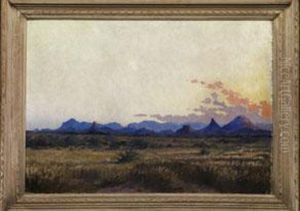Axel Eriksson Paintings
Axel Eriksson was not an artist in the traditional sense of painters or sculptors, but rather a notable Swedish ornithologist and trader who lived and worked primarily in Africa. Born on July 29, 1846, in Värmland, Sweden, Eriksson developed an interest in natural history early in his life, particularly in birds, which would later shape his career and contributions.
Eriksson initially moved to Africa in the 1860s, migrating to what is now Angola. His pursuits there were not initially focused on ornithology but were primarily commercial. He was involved in trading various goods, which was a common occupation for European settlers in Africa during that period. However, his passion for birds soon took a more central role in his life.
He became one of the pioneering bird collectors in southwestern Africa, amassing a significant collection of bird specimens, many of which were new to science at the time. His work was crucial in expanding the knowledge of African avifauna. Eriksson worked tirelessly, often under challenging conditions, to explore the birdlife of the region. His contributions to ornithology are recognized through the various bird species named after him.
Tragically, Axel Eriksson's life was cut short when he died on January 5, 1901, while in Angola. Although he is not remembered as an artist in the conventional sense, his legacy lives on through his contributions to the field of ornithology and the greater understanding of African wildlife that he helped to foster. Eriksson's life's work was instrumental in bridging the gap between unknown African avian fauna and the scientific communities in Europe, who eagerly studied his collected specimens.


